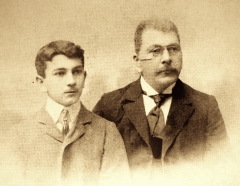|
Kirkiaceae
Kirkiaceae is a family of flowering plants in the order Sapindales. It comprises one (or two) genera, '' Kirkia'' (and '' Pleiokirkia'' now included in ''Kirkia''), totalling six species. These two genera were previously placed in family Simaroubaceae, but were transferred into their own family because they produce neither quassinoids nor limonoids. ''Kirkia'' is named for Captain John Kirk (explorer) of the famous Zambesi Expedition. They occur along the east coast of Africa, and in Madagascar Madagascar (; mg, Madagasikara, ), officially the Republic of Madagascar ( mg, Repoblikan'i Madagasikara, links=no, ; french: République de Madagascar), is an island country in the Indian Ocean, approximately off the coast of East Africa .... References External links * * Kirkiaceaeat the APG website Sapindales families Afrotropical realm flora Sapindales {{sapindales-stub ... [...More Info...] [...Related Items...] OR: [Wikipedia] [Google] [Baidu] |
Sapindales
Sapindales is an order of flowering plants. Well-known members of Sapindales include citrus; maples, horse-chestnuts, lychees and rambutans; mangos and cashews; frankincense and myrrh; mahogany and neem. The APG III system of 2009 includes it in the clade malvids (in rosids, in eudicots) with the following nine families: *Anacardiaceae * Biebersteiniaceae * Burseraceae * Kirkiaceae * Meliaceae * Nitrariaceae (including Peganaceae and Tetradiclidaceae) * Rutaceae * Sapindaceae * Simaroubaceae The APG II system of 2003 allowed the optional segregation of families now included in the Nitrariaceae. In the classification system of Dahlgren the Rutaceae were placed in the order Rutales, in the superorder Rutiflorae (also called Rutanae). The Cronquist system of 1981 used a somewhat different circumscription, including the following families: * Staphyleaceae * Melianthaceae *Bretschneideraceae * Akaniaceae * Sapindaceae * Hippocastanaceae * Aceraceae * Burseraceae *A ... [...More Info...] [...Related Items...] OR: [Wikipedia] [Google] [Baidu] |
Kirkia
''Kirkia'' is a genus of plant in family Kirkiaceae. It was previously placed in family Simaroubaceae, but was transferred into Kirkiaceae, together with '' Pleiokirkia'', because these genera produce neither quassinoids nor limonoids. The genus name of ''Kirkia'' is in honour of Sir John Kirk, (1832–1922), who was a physician, naturalist, companion to explorer David Livingstone, and British administrator in Zanzibar. Species It contains the following species (6), but this list may be incomplete): * ''Kirkia acuminata ''Kirkia'' is a genus of plant in family Kirkiaceae. It was previously placed in family Simaroubaceae, but was transferred into Kirkiaceae, together with '' Pleiokirkia'', because these genera produce neither quassinoids nor limonoids. The genus ...'' Oliv., 1868, Cata ... [...More Info...] [...Related Items...] OR: [Wikipedia] [Google] [Baidu] |
John Kirk (explorer)
Sir John Kirk, (19 December 1832 – 15 January 1922) was a physician, naturalist, companion to explorer David Livingstone, and British administrator in Zanzibar, where he was instrumental in ending the slave trade in that country, with the aid of his political assistant, Ali bin Saleh bin Nasser Al-Shaibani. Early life and education He was born on 19 December 1832 in Barry, Angus, near Arbroath, Scotland, and earned his medical degree from the University of Edinburgh, presenting his thesis '''On functional disease of the heart. Family Kirk's daughter, Helen, married Major-General Henry Brooke Hagstromer Wright CB CMG, the brother of the famous bacteriologist and immunologist, Sir Almroth Edward Wright and of Sir Charles Theodore Hagberg Wright, Secretary and Librarian of London Library. Kirk's son Colonel John William Carnegie Kirk was author of ''A British Garden Flora''. The engineer, Alexander Carnegie Kirk, was John Kirk's elder brother. Career Explorer From 1858 t ... [...More Info...] [...Related Items...] OR: [Wikipedia] [Google] [Baidu] |
Sapindales Families
Sapindales is an order of flowering plants. Well-known members of Sapindales include citrus; maples, horse-chestnuts, lychees and rambutans; mangos and cashews; frankincense and myrrh; mahogany and neem. The APG III system of 2009 includes it in the clade malvids (in rosids, in eudicots) with the following nine families: *Anacardiaceae *Biebersteiniaceae *Burseraceae *Kirkiaceae *Meliaceae *Nitrariaceae (including Peganaceae and Tetradiclidaceae) *Rutaceae *Sapindaceae *Simaroubaceae The APG II system of 2003 allowed the optional segregation of families now included in the Nitrariaceae. In the classification system of Dahlgren the Rutaceae were placed in the order Rutales, in the superorder Rutiflorae (also called Rutanae). The Cronquist system of 1981 used a somewhat different circumscription, including the following families: *Staphyleaceae * Melianthaceae *Bretschneideraceae *Akaniaceae *Sapindaceae * Hippocastanaceae * Aceraceae *Burseraceae *Anacardiaceae * Juliania ... [...More Info...] [...Related Items...] OR: [Wikipedia] [Google] [Baidu] |
Simaroubaceae
The Simaroubaceae are a small, mostly tropical, family in the order Sapindales. In recent decades, it has been subject to much taxonomic debate, with several small families being split off. A molecular phylogeny of the family was published in 2007, greatly clarifying relationships within the family. Together with chemical characteristics such as the occurrence of petroselinic acid in ''Picrasma'', in contrast to other members of the family such as '' Ailanthus'', this indicates the existence of a subgroup in the family with ''Picrasma'', ''Holacantha'', and ''Castela''. The best-known species is the temperate Chinese tree-of-heaven '' Ailanthus altissima'', which has become a cosmopolitan weed tree of urban areas and wildlands. Well-known genera in the family include the tropical '' Quassia'' and ''Simarouba ''Simarouba'' is a genus of trees and shrubs in the family Simaroubaceae, native to the neotropics. It has been grouped in the subtribe Simaroubina along with the '' ... [...More Info...] [...Related Items...] OR: [Wikipedia] [Google] [Baidu] |
Armen Takhtajan
Armen Leonovich Takhtajan or Takhtajian ( hy, Արմեն Լևոնի Թախտաջյան; russian: Армен Леонович Тахтаджян; surname also transliterated Takhtadjan, Takhtadzhi︠a︡n or Takhtadzhian, pronounced takh-tuh-JAHN; 10 June 1910 – 13 November 2009), was a Soviet- Armenian botanist, one of the most important figures in 20th century plant evolution and systematics and biogeography. His other interests included morphology of flowering plants, paleobotany, and the flora of the Caucasus. He was one of the most influential taxonomists of the latter twentieth century. Life Family Takhtajan was born in Shushi, Russian Empire, present-day disputed Nagorno-Karabakh, on 10 June 1910, to a family of Armenian intellectuals. His grandfather Meliksan Takhtadzhyan Petrovich had been born in Trabzon, Ottoman Empire and was educated in Italy, on the island of San Lazzaro degli Armeni, an Armenian enclave, spoke many languages and worked as a journ ... [...More Info...] [...Related Items...] OR: [Wikipedia] [Google] [Baidu] |
Angiosperm Phylogeny Group
The Angiosperm Phylogeny Group (APG) is an informal international group of systematic botanists who collaborate to establish a consensus on the taxonomy of flowering plants (angiosperms) that reflects new knowledge about plant relationships discovered through phylogenetic studies. , four incremental versions of a classification system have resulted from this collaboration, published in 1998, 2003, 2009 and 2016. An important motivation for the group was what they considered deficiencies in prior angiosperm classifications since they were not based on monophyletic groups (i.e., groups that include all the descendants of a common ancestor). APG publications are increasingly influential, with a number of major herbaria changing the arrangement of their collections to match the latest APG system. Angiosperm classification and the APG In the past, classification systems were typically produced by an individual botanist or by a small group. The result was a large number of systems ... [...More Info...] [...Related Items...] OR: [Wikipedia] [Google] [Baidu] |
Botanical Journal Of The Linnean Society
The ''Botanical Journal of the Linnean Society'' is a scientific journal publishing original papers relating to the taxonomy of all plant groups and fungi, including anatomy, biosystematics, cytology, ecology, ethnobotany, electron microscopy, morphogenesis, palaeobotany, palynology and phytochemistry.Botanical Journal of the Linnean Society The journal is published by the Linnean Society of London and is available in both print and searchable online formats. Like the '' Biological Journal of the Linnean Society'' (publ ... [...More Info...] [...Related Items...] OR: [Wikipedia] [Google] [Baidu] |
Flowering Plant
Flowering plants are plants that bear flowers and fruits, and form the clade Angiospermae (), commonly called angiosperms. They include all forbs (flowering plants without a woody stem), grasses and grass-like plants, a vast majority of broad-leaved trees, shrubs and vines, and most aquatic plants. The term "angiosperm" is derived from the Greek words ἀγγεῖον / ('container, vessel') and σπέρμα / ('seed'), meaning that the seeds are enclosed within a fruit. They are by far the most diverse group of land plants with 64 orders, 416 families, approximately 13,000 known genera and 300,000 known species. Angiosperms were formerly called Magnoliophyta (). Angiosperms are distinguished from the other seed-producing plants, the gymnosperms, by having flowers, xylem consisting of vessel elements instead of tracheids, endosperm within their seeds, and fruits that completely envelop the seeds. The ancestors of flowering plants diverged from the common ance ... [...More Info...] [...Related Items...] OR: [Wikipedia] [Google] [Baidu] |
Quassinoid
Quassinoids are degraded triterpene lactones (similar to limonoids) of the Simaroubaceae plant family grouped into C-18, C-19, C-20, C-22 and C-25 types. The prototypical member of the group, quassin, was first described in the 19th century from plants of the genus '' Quassia'' from which it gets its name. It was isolated in 1937 and its structure elucidated in 1961. They are a biologically potent class of natural products, possessing antimalarial, antifeedant, insecticidal, anti-inflammatory, and anticancer properties. The quassinoid bruceantin reached two separate phase II clinical trials in 1982 and 1983. Other quassinoids include: * Bruceanols * Bruceolide * Eurycomanone * Gutolactone Gutolactone is a chemical compound extracted from '' Simaba guianensis'' and it has displayed antimalarial properties ''in vitro ''In vitro'' (meaning in glass, or ''in the glass'') studies are performed with microorganisms, cells, or biol ... * Isobrucein A * Neoquassin * Nigaki ... [...More Info...] [...Related Items...] OR: [Wikipedia] [Google] [Baidu] |
Limonoid
Limonoids are phytochemicals of the triterpenoid class which are abundant in sweet or sour-scented citrus fruit and other plants of the families Cucurbitaceae, Rutaceae, and Meliaceae. Certain limonoids are antifeedants such as azadirachtin from the neem tree.{{cite journal, title=Biological activity of limonoids from the rutales, journal=Phytochemistry, volume=31, pages=377–394, authors=Donald E.Champagne, Opender Koul, Murray B. Isman, Geoffrey G. E.Scudder, G. H. Neil Towers, year=1992, issue=2, doi=10.1016/0031-9422(92)90003-9 Chemically, the limonoids consist of variations of the furanolactone core structure. The prototypical structure consists of four six-membered rings and a furan Furan is a heterocyclic organic compound, consisting of a five-membered aromatic ring with four carbon atoms and one oxygen atom. Chemical compounds containing such rings are also referred to as furans. Furan is a colorless, flammable, highly ... ring. Limonoids are classed as tetra ... [...More Info...] [...Related Items...] OR: [Wikipedia] [Google] [Baidu] |


_at_Saldanha_Bay.jpg)


